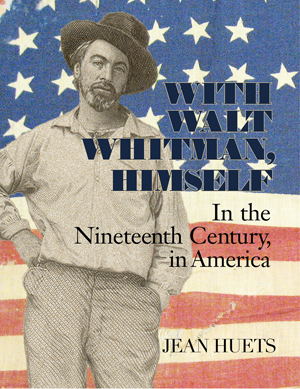
Walt Whitman was ambivalent about alcohol. Many Whitman biographers believe his father was alcoholic, and a friend recorded that Whitman attributed his little brother’s developmental deficits to alcohol use, probably an accident or physical abuse, since Eddy’s troubles began at age two or three.
Temperance as a movement, however, left Walt Whitman cold. He called his 1842 (pre-Leaves of Grass) “temperance” novel, Franklin Evans, or the Inebriate “damned rot—rot of the worst sort,” and claimed to have fortified himself with liquor while writing it. Safe to say, Whitman knew the dangers of abuse and wasn’t much interested in getting intoxicated. He did enjoy drinking occasionally and moderately.
Very late in his life, when suffering physical malaise, he was especially fond of champagne which “set him up.” After a tribute dinner, Whitman extolled the bubbly to a friend: “I can’t forget about the champagne, Horace, the iced champagne: how straight it went to the heart of the matter—to my need—setting up the whole night! To know what I know about the condition in which I went downstairs—then to know how the champagne lifted me! It is the explication of much!”
WITH WALT WHITMAN, HIMSELF: IN THE NINETEENTH CENTURY, IN AMERICA | by Jean Huets
“A true Whitmanian feast—for the intellect as well as for the eyes.” — Ed Folsom, editor Walt Whitman Quarterly
Amazon | B&N | bookshop.org (supports indie booksellers)
signed copies, free shipping order from Circling Rivers
“A beautiful book of windows onto the life of Walt Whitman…. From the clear ringing prose to the fascinating photographs and colored illustrations of the great poet’s life we find the man anew—standing in his time and looking straight at us. [Huets] has made a book of marvels and I can’t put it down.” — Steve Scafidi, Poet Laureate, Virginia
Explore the fascinating roots of Whitman’s great work, Leaves of Grass: a family harrowed by alcoholism and mental illness; the bloody Civil War; burgeoning, brawling Manhattan and Brooklyn; literary allies and rivals; and his beloved America, racked by disunion even while racing westward. Over 300 color period images immerse the reader in the life and times of Walt Whitman.

SOURCES RE WW & ALCOHOL: Horace Traubel, With Walt Whitman in Camden | Whitman’s notebook, The New York Times, Disunion | Jean Huets, With Walt Whitman, Himself.
